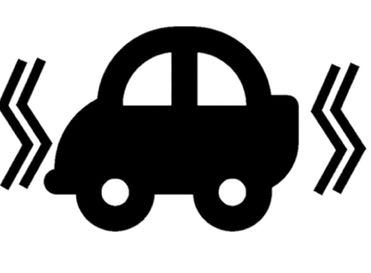Can You Chip On The Green

Golf is a game of precision, and nowhere is precision more important than around the green. The ability to hit accurate chip shots can save you strokes and make the difference between a good round and a great round. Whether you’re a beginner or an experienced player, mastering the art of chipping can take your game to the next level.
But hitting chip shots is easier said than done. It requires a combination of skill, technique, and strategy. From choosing the right club to executing the shot properly, there are several factors to consider when hitting chip shots. In this guide, we’ll take you through the steps of hitting chip shots around the green, from understanding the basics to advanced techniques and course management strategies.
We’ll cover everything you need to know to become a skilled chipper, including grip and stance, weight distribution, shot trajectory, common mistakes to avoid, and practice drills. We’ll also dive into advanced techniques such as adding spin to your chip shots, hitting flop shots, and using bounce. And we’ll explore the importance of course management and the mental game when it comes to chipping.
By the end of this guide, you’ll have the knowledge and skills you need to hit accurate chip shots around the green and take your short game to the next level. So let’s get started and learn how to hit chip shots like a pro.

Understanding Chip Shots
Before we dive into the specifics of hitting chip shots, it’s important to understand what they are and how they differ from pitch shots. Chip shots are low-trajectory shots that fly for a short distance before rolling out towards the hole. They are typically played with a wedge or a short iron, and are used when you need to get the ball in the air for a short distance, but not as much as a pitch shot.
Pitch shots, on the other hand, are high-trajectory shots that fly for a longer distance before landing on the green. They are typically played with a higher-lofted club, such as a sand wedge or lob wedge, and are used when you need to get the ball up and over an obstacle, such as a bunker or a tree.
Preparing for the Shot
Before you hit a chip shot, there are a few things you need to consider. First, assess the situation: how far away is the hole? Are there any obstacles in your way? What is the lie of the ball? Based on these factors, you can choose the right club for the shot.
When it comes to grip and stance, it’s important to keep it simple. For a basic chip shot, grip the club with your hands close together and position the ball in the center of your stance. Your feet should be shoulder-width apart, and your weight should be evenly distributed between your feet.
Execution
Now that you’re set up for the shot, it’s time to execute it. The key to a successful chip shot is to focus on the backswing and follow-through. On the backswing, take the club back with your wrists and arms, keeping the clubface square to the ball. On the follow-through, bring the club down and through the ball, maintaining a smooth and controlled swing.
When it comes to weight distribution, most of your weight should be on your front foot during the shot. This will help you make clean contact with the ball and prevent you from hitting it fat or thin.
Common Mistakes to Avoid
When hitting chip shots, there are a few common mistakes to watch out for. First, avoid hitting the ball fat, which means hitting the ground before the ball. This will cause the ball to come up short and may even leave it in the rough. Second, avoid hitting the ball thin, which means hitting the top of the ball. This will cause the ball to go too far and may even fly over the green. Finally, avoid overcompensating for obstacles or wind. Trust your swing and hit the shot with confidence.
Practice Drills
Like any other aspect of golf, the key to mastering chip shots is practice. There are several drills you can do to improve your chipping skills, such as stationary target drills, moving target drills, and distance control drills.
Stationary target drills involve placing a target, such as a bucket or a hula hoop, a few yards away from you and trying to hit it with your chip shot. Moving target drills involve hitting a moving target, such as a rolling ball. Distance control drills involve hitting shots to a specific distance, such as 5, 10, or 15 yards away.
Advanced Techniques
Once you’ve mastered the basics of chipping, you can start to incorporate advanced techniques into your game. One technique is adding spin to your chip shots. To add backspin, hit the ball with a descending blow and strike the ball slightly behind the center. This will cause the ball to come off the clubface with more backspin, which will help it stop quickly on the green.
Another advanced technique is the flop shot, which is used when you need to hit the ball high and land it softly on the green. To execute a flop shot, open the face of your club and position the ball towards the toe. Take a full backswing and follow-through, allowing the club to slide under the ball and pop it up in the air.
Using bounce is another advanced technique that can help you hit better chip shots. Bounce refers to the angle between the leading edge and the back edge of the clubface. Using bounce effectively can help you avoid hitting the ball fat or thin and create more spin.
Course Management
Course management is an important aspect of golf, and it applies to chipping as well. When you’re chipping around the green, it’s important to assess the situation and choose the right shot for the situation. If there are obstacles in your way, such as a bunker or a tree, you may need to hit a flop shot or a high pitch shot to get over them. If the green slopes away from you, you may need to use more loft to help the ball stop quickly.
Mental Game
The mental game is just as important as the physical game in golf. When you’re chipping, it’s important to have a positive mindset and visualize the shot before you hit it. Take a few deep breaths and focus on your target. Don’t let the pressure get to you – stay confident in your abilities and trust your swing.
Conclusion
In conclusion, chipping is a crucial aspect of golf that can help you save strokes and gain an edge over your opponents. By understanding the basics, preparing for the shot, executing it properly, avoiding common mistakes, practicing drills, incorporating advanced techniques, managing the course, and mastering the mental game, you can become a skilled chipper and take your game to the next level. So get out there and practice – your short game will thank you!





